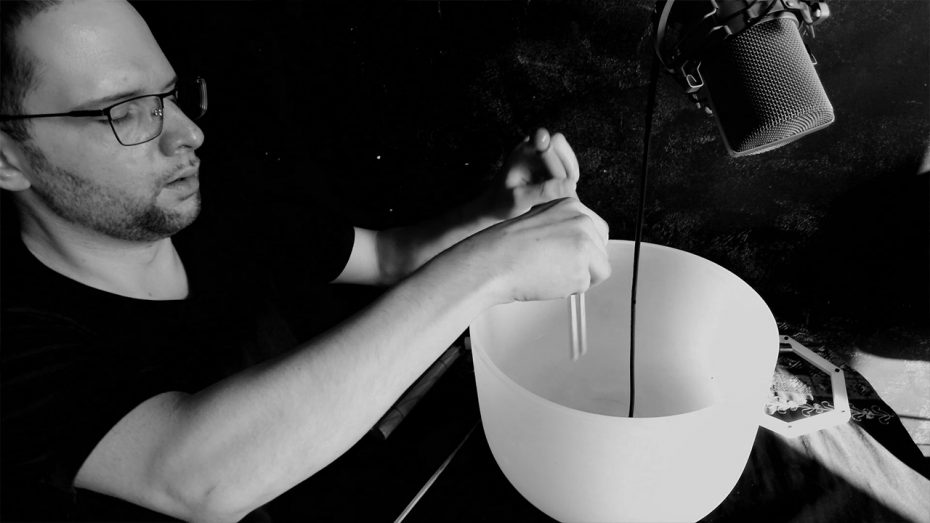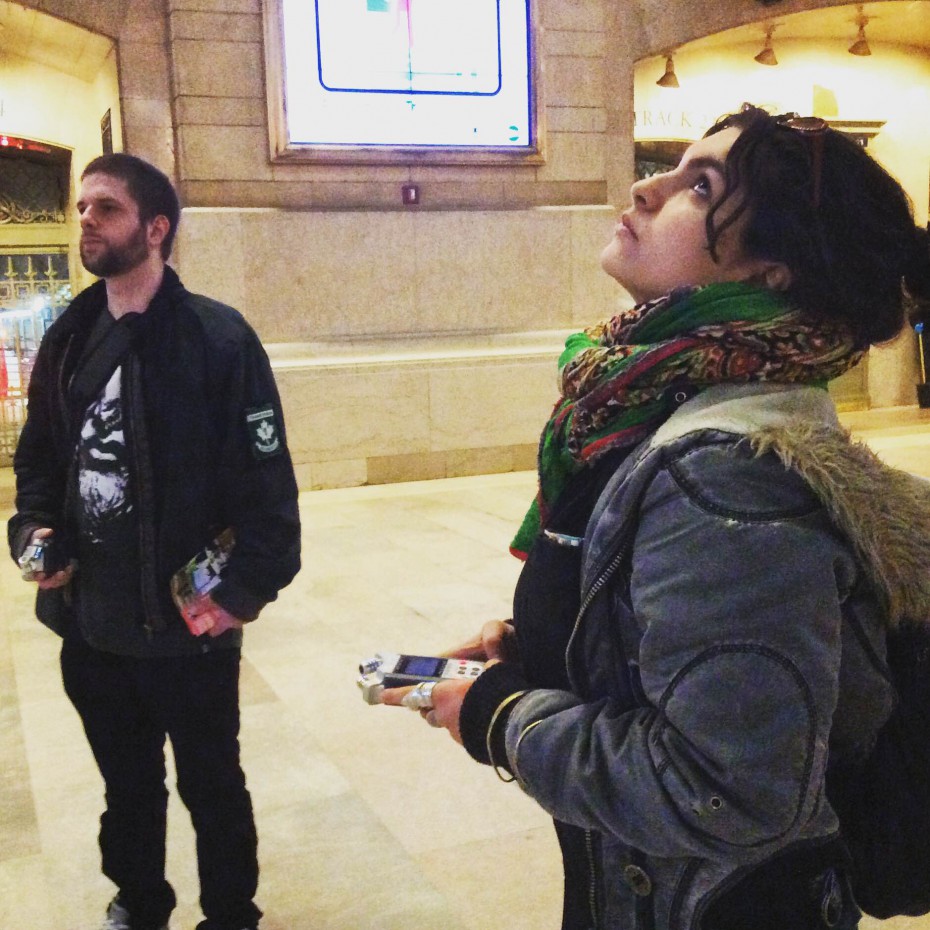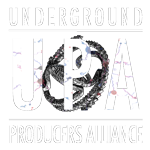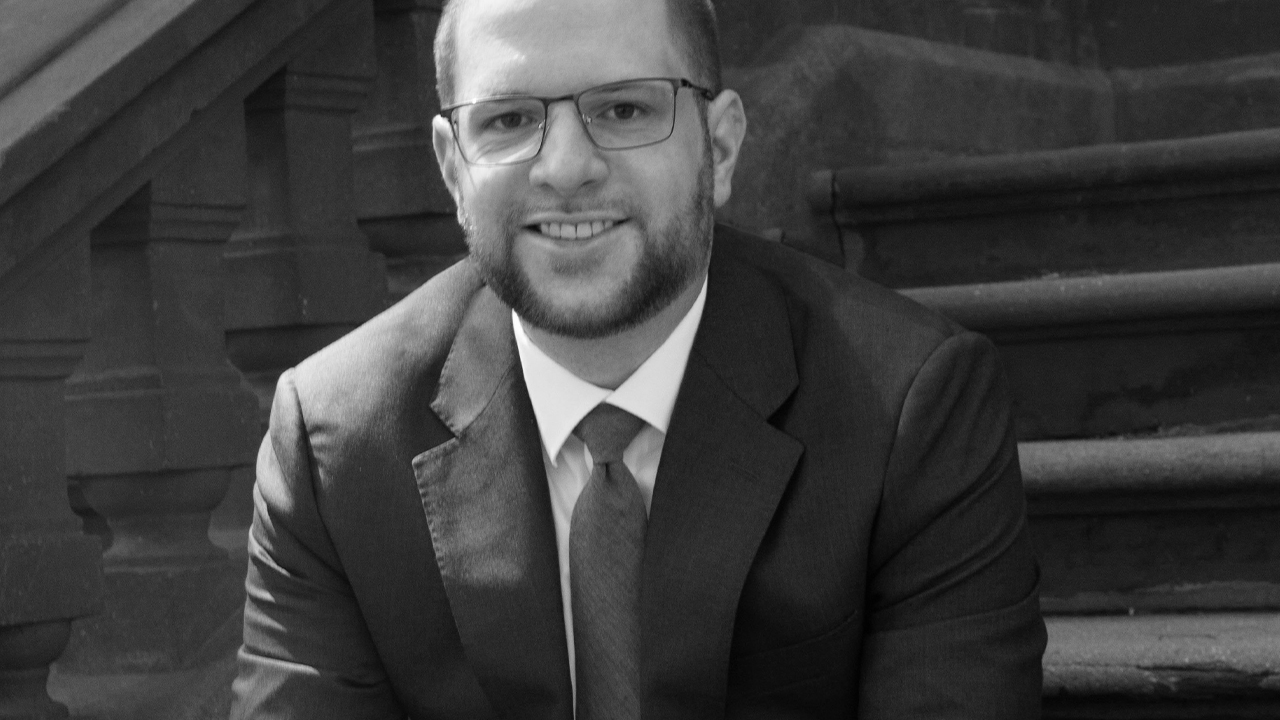STUDENT SPOTLIGHT – AL ZLOGAR: Next Gen Audio Forensics
By Deniz Ataman
When we think of early audio forensics—WWII spectrographs identifying people of interest or the missing 18 minutes of Nixon’s infamous Watergate tapes—the field was at the height of analytical analog technology. These technologies paved the way towards a field rooted in advanced digital software, scientific methodology and keen ears to analyze and authenticate recordings for civil and criminal cases. As a music fan and student of mixing and engineering, Al discovered audio forensics in New York City’s Grand Central Station. He was taking a class, Sonic Architecture, at the Underground Producers Alliance (UPA) taught by Raz Mesinai where he learned the sonic footprint of the inimitable train station.
Field recorder in hand, Al learned how to critically listen to a space – from dissecting individual ambient sounds to understanding how they harmonize together to create the individual sound of a space. After his classes at UPA ended, Raz introduced Al to Ed Primeau, legendary audio forensics expert who was called on to enhance and combine two versions of the Air Force One radio recordings the day JFK was assassinated. Ed recommended the audio forensics certification program at the University of Colorado Denver, which Al completed. Once certified, he apprenticed under Ed for a year where he learned how to forensically enhance family, civil and criminal cases.
Soon after, he started his own shop, Al Zlogar Forensics Inc., where he provides audio forensics services including audio forensic enhancement, authentication and recovery for recorded audio evidence.
I sat down with Al for this interview in his Brooklyn apartment to talk about his path from UPA to running his own shop. His studio was rearranged from my last visit as his space continuously shapeshifts to fit his latest audio equipment. A music lover with a scientist’s mind, Al’s studio is filled with pedals, mod synths and an enviable cable organizer, among others. His most recent acquisition? A Black Magic SD splitter that allows him to capture audio from a VHS player where he planned to cut samples from his childhood home videos as a collaborative Christmas gift from him and his mother to his father and sister. Here’s our conversation for the UPA:
What was your first introduction to audio forensics like?
I was taking lessons at UPA with Raz Mesinai as my teacher. I took the Sonic Architecture class and our first lesson was at Grand Central Station. Raz gave me a field recorder and a notebook and directed us to record and take very precise notes describing what we heard. We walked around and learned how to listen to the station as one unique composition and how even the people were the synth. That opened my ears up to the world of room tones. Raz noticed I liked that a lot and coordinated a lesson to have Ed [Primeau] teach me for an hour over video.
I appreciate that lesson with Raz because that is where I knew the audio forensics world existed. Before I didn’t even know it existed and didn’t think it could be a possibility. And I thank Raz and Ed for that.
Once Raz saw that ambient sound and analyzing those sounds were interesting to you, how else did he work with you on the UPA program?
Ever since the class, Raz instructed me to go around NYC for almost four years to record the sound of the city in specific areas, different buildings, train stations, Williamsburg bridge. It was a positive feedback loop where Raz curated this amazing process to get my ears sharp for field recording but he also taught me to be efficient.

In the program with the UPA, he showed me how to EQ in the best of ways. I used to just listen and watch him EQ. I would say that was the most important thing I learned, which carried over to the process of sound enhancement for forensics. UPA was a great experience to refine my understanding, my ears, my skills to a professional level and be ready to pursue audio forensics for a career. I thank Raz for seeing the potential and for giving me the tools that were needed to do the work.
What was your University of Colorado Denver experience like?
Over the pandemic the courses became available online and I instantly signed up.
I took forensic analysis and enhancement of digital audio and forensic analysis and authentication of digital audio and loved those courses. I learned there’s a difference between studio work and high-quality audio and forensic work where you’re dealing with low quality samples and it’s a different framework of thinking and processing. Those courses helped me start understanding how to know the difference between using the same tools that are available. When I finished the courses, I wrote an email to Ed telling him I took those courses and I enjoyed it. He offered me a yearlong mentorship to study under him and learn the process through his 40+ years of experience in the field.
So along with learning more technique and skill, you learned how to set up your own shop.
He showed me how to prevent some mistakes he made along the way and how to avoid making the same ones, build confidence with my technical skills and how to make it a business. I didn’t know much of that at the time, so he helped me every step of the way.

It’s nice that you have a guide while you navigate it on your own, figuring out your own system and process which I feel like is something that evolves. We’ve talked about that – figuring out what method works for you and that’s going to get you those results that matter.
Speaking of that – every file you encounter in audio forensics enhancement is like a puzzle. It’s completely different than the next file you’ll be working on, so that means different processes, different order, different problems. When a recording is happening in a pocket or an unideal situation involving a conversation, it’s usually low-quality recording or someone trying to record something quickly. So, it’s very helpful to know all the tools’ uses and come up with a plan with a series of processes you think will work; and if they work you document that process.
You work primarily on civil and criminal cases and these recordings are all very different. How do you know when something’s been compromised or tampered with? Can you listen and immediately tell or does iZotope RX help you see it?
Lawyers are the ideal client, but you’re also dealing with individual clients that haven’t hired an attorney and are asking to listen to their audio.
Because you work on a lot of files, you get to understand the audio right when you listen to it and get a feel for it. There is an interesting thing called a noise floor, the sum of all extraneous noise in a recording, including any background noise and any noise created by the device itself. It is unique and random; and a tell-tale sign of whether a recording has been tampered with where you just hear something change in the background that shouldn’t change because it’s very hard to reproduce the same scenario where the recording was originally taken place. Let’s say someone was trying to add something different in, it’s very hard to mimic that same background noise floor to accompany whatever the person was tampering with.

How often do you come across a tampered file?
When you do forensic audio enhancement, you’re improving the file. Another category is forensic audio authentication and that’s for figuring out if the file has been tampered with. I’ve done one case so far to figure out if several skips in the recording were malicious or not.
I remember you showing me what an edit looks like on the software.
Yeah the butt splice.*
It’s interesting if you look at those files now, they were dealing with an analog world. At that time, they only had certain tools available to enhance and do audio work in general. Now we have all these digital tools to scrutinize the file a lot more and the edits they were doing by razor and tape are easily seen by modern software today.
It’s a cool thing to think about 30 or 40 years from now, the future will have different tools that will easily spot out malicious edits in our current time. The butt splice is so easy to detect visually these days versus just listening for it back in the day.
*An edit cut
Do you have to know anything about the judicial system?
Yes. For every investigation I follow best practices of the Department of Justice (DOJ) Special Report on Forensic Examinations of Digital Evidence which recommends taking actions to secure the collection should not affect the integrity of that evidence. As a member of the scientific community, I follow best practices outlined by the Scientific Working Group for Digital Evidence (SWGDE) and the National Institute of Standards and Technology (NIST). They outline the protocols and procedures for intake, extraction and handling of digital media evidence, which requires documentation of each step. The best practices ensure
When you are working on a forensic audio enhancement case you document the steps in such a way so that that another technician or expert can process the audio so that the enhancement process is repeatable a million times to get same or similar results. You must be accountable upon repetition and exactness when documenting. There’s a whole list of best practices we follow to keep the scientific community on the same basis and to make sure that the quality and integrity of digital media evidence are maintained throughout the seizure and extraction process. If these protocols aren’t followed, digital media evidence becomes vulnerable to tampering or mishandling.
Right. Just like scientific studies, you have to be able to replicate it.
And speaking of that, it’s fun to think about everything you do in this world, it has to be backed my science. You have to think “Can I prove this scientifically?” If so you can do it. If not, you have to avoid it unless you can prove it by the scientific method.
You’re listening to one file hundreds of times. But the detailed documenting makes sense. If you’re going to court and the prosecution is trying to argue the file, the blueprint of the process can make or break a case.
Your documenting is preparing you for your report when you go to court. So, you’re going to provide a forensic report and within that is where you’re going to include the images of the filters you used, your processing methodology and all the reasonings why you used these specific filters to improve the intelligibility or improve the audio.
Your report is your outline for testimony. The documenting process is there so that everyone has a copy of the report and see what you did in a clear, concise way. I like that as a member of the scientific community, you must follow a code of ethics because it’s less manipulation and more factual, which helps the field progress further.
How do you listen now versus before you started your career path?
Before it was just for enjoyment, just loving artists and bands for entertainment. When I was young, I was classically trained on the piano and jazz with the alto saxophone. In jazz, it is essential to develop your ear. About ten years ago, I attended Dubspot and learned about training your ear from a music production and mixing standpoint. From then on, I knew a good ear would be helpful. Now, it’s a blessing and a curse because I dissect everything – it’s like a game. Especially going to shows, that helps a lot. I can never go back to [just] listening to music.
Speaking of listening to sounds, you recorded your visit to the cardiologist. Can we listen now?
Yeah it was recorded off a phone.
//plays a recording of his heartbeat which sounds like warbled sheet metal in a rhythmic pace followed by a muffled, fuzzy pulsing rhythm.
That noise happened when I took a deep breath, exhaled and then didn’t breathe in again.
That was your pulse.
My heart. It was the blood flow speed.
It’s similar to an ultrasound.
It sounds pretty good for a phone recording.
Yeah the sound by nature is almost noise [music].
Written and interview by Deniz Ataman for the Underground Producers Alliance.

Al Zlogar and fellow UPA student during critical listening and acoustics, class, Grand Central Station, NYC

